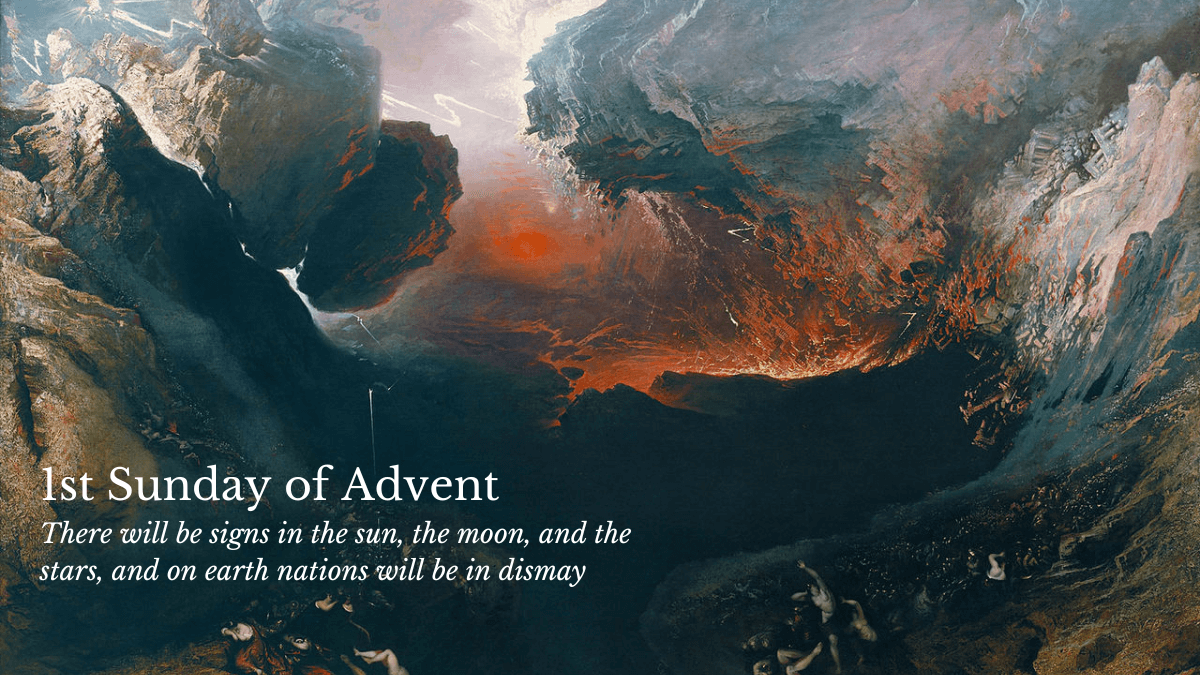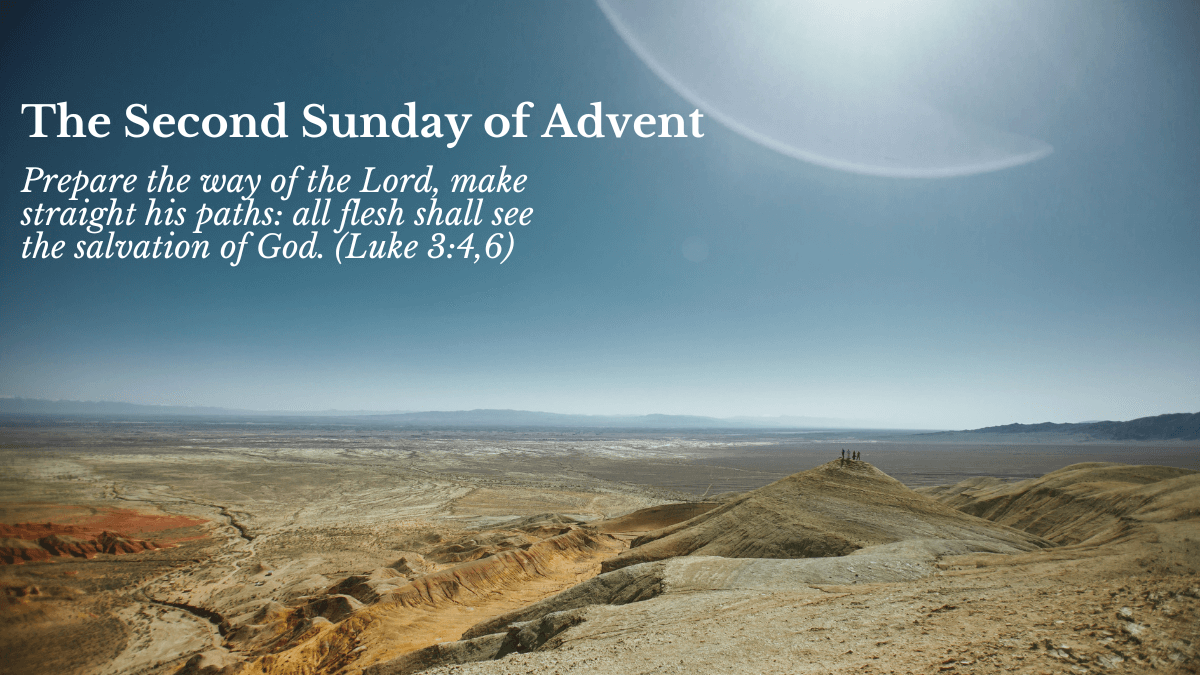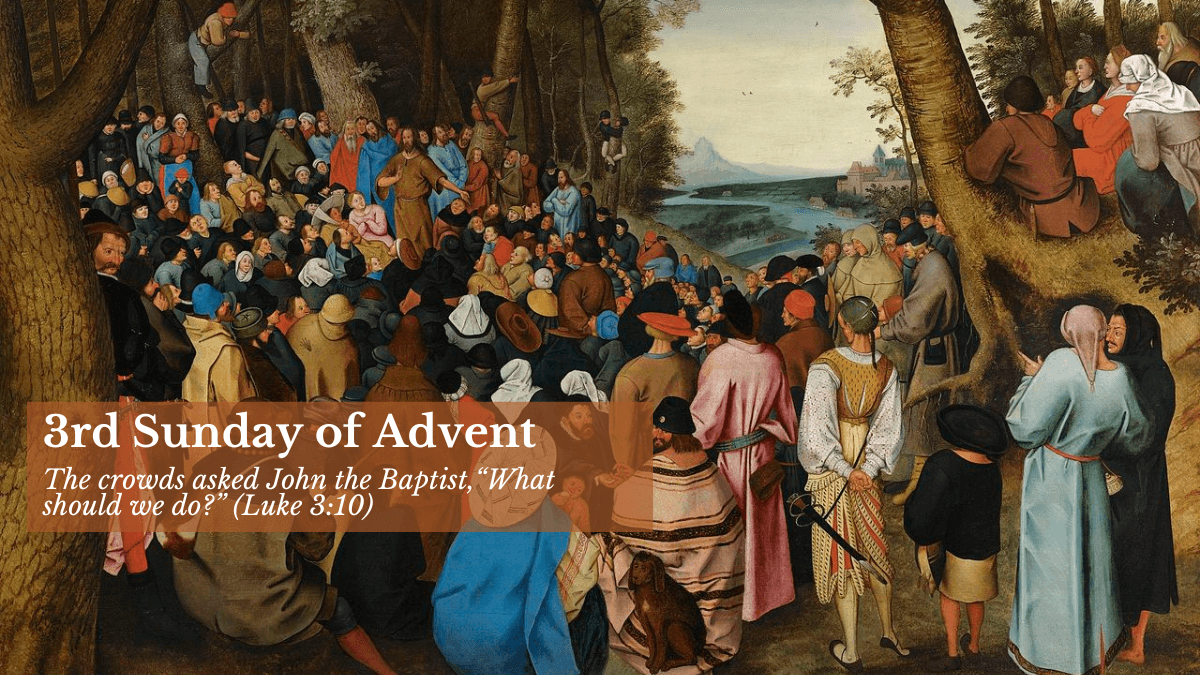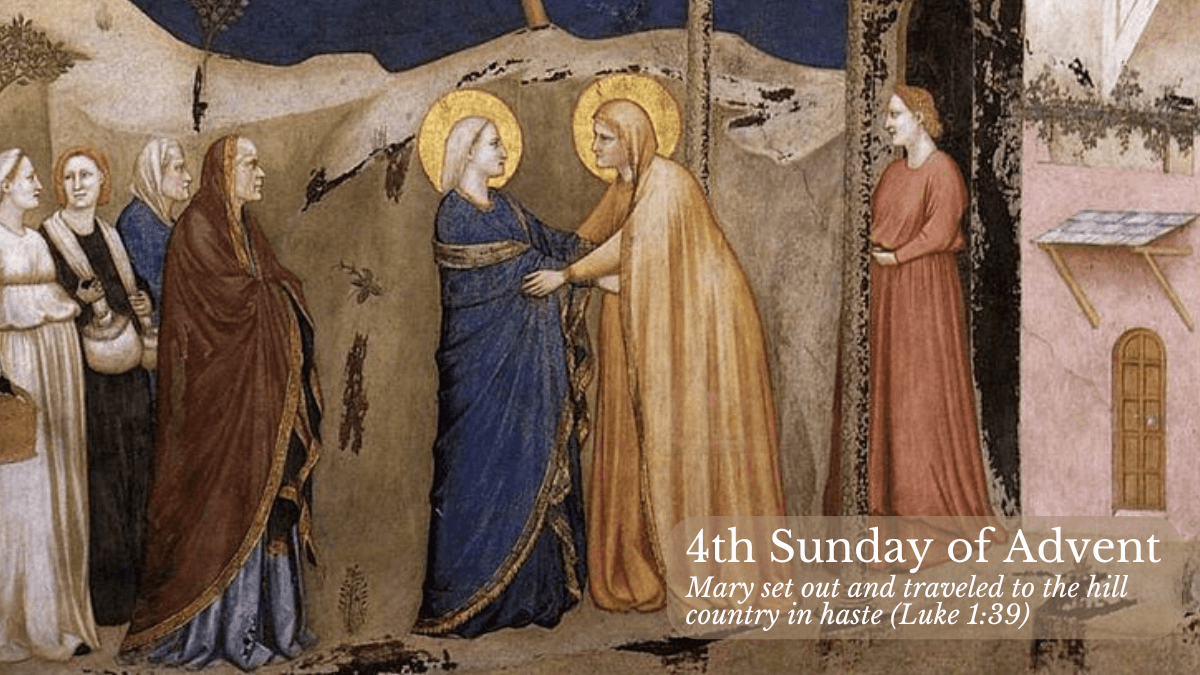
The Days are Coming
This is the 1st Sunday of Advent. The readings are ones are focused on the “comings” of Jesus. While we are prone to think of Jesus coming at Christmas, the tone and tenor of the readings are quiet apocalyptic. Readings more attuned to the 2nd coming at the end of the ages – an especially suitable reading one week following the Solemnity of Christ the King of the Universe. “The days are coming, says the LORD, when I will fulfill the promise I made to the house of Israel and Judah” (Jer 33:14) This speaks to the promise of a Savior (Christmas) and when all are made whole (2nd coming)

A Call for Repentance
This is the 2nd Sunday of Advent as Luke locates Infancy Narrative in the flow of world history. The focus of the narrative is John the Baptist who “went throughout (the) whole region of the Jordan, proclaiming a baptism of repentance for the forgiveness of sins” (Luke 3:3) John is the actor fulfilling the promise of Isaiah that one would come from the wilderness proclaiming the coming of the Messiah.
Click the image above to learn more

What must I do?
Hordes of people are coming out to him and there are two things of note: (a) the location – where Joshua and the Exodus people crossed into the Holy Land, and (b) the people are coming from everywhere – including Jerusalem. They recognize the need for conversion and making changes in their lives. John is repeatedly asked “What must I do?”
Click the image above to learn more

Mary set out in haste...
“During those days Mary set out and traveled to the hill country in haste to a town of Judah, where she entered the house of Zechariah and greeted Elizabeth” (Luke 1:39-40). It is noteworthy that Mary’s journey is not in obedience to the angel Gabriel, who gave no such command. The reason for Mary’s visit to her relative Elizabeth can be found in an earlier proclamation of the Angel Gabriel: “And behold, Elizabeth, your relative, has also conceived a son in her old age, and this is the sixth month for her who was called barren; for nothing will be impossible for God.” (Luke 1:36-37).
Click the image above to learn more
Themes and Character of the Advent Readings
Advent has a two-fold character: as a season to prepare for Christmas when Christ’s first coming to us is remembered; as a season when that remembrance directs the mind and heart to await Christ’s second coming at the end of time. Advent is thus a period of devout and joyful expectation” (General Norms for the Liturgical Year and Calendar, 39).
This two-fold character is best expressed in the Scripture readings chosen for Advent. No matter which Lectionary cycle we’re in (Year A, B or C; this Advent starts us in cycle A), the Gospel theme for each Sunday of Advent remains the same.
The First Sunday of Advent centers on the Lord’s coming at the end of time: “Therefore, stay awake! For you do not know on which day your Lord will come. Be sure of this: if the master of the house had known the hour of night when the thief was coming, he would have stayed awake and not let his house be broken into. So too, you must also be prepared, for at an hour you do not expect, the Son of man will come” (Matthew 24:42–44).
The Second and Third Sundays of Advent focus on the message of John the Baptist, who baptizes with water in preparation for the one who will baptize with the Holy Spirit and fire. John calls people to repentance, telling them that the kingdom of God is at hand: “John the Baptist appeared, preaching in the desert of Judea and saying, ‘Repent, for the kingdom of heaven is at hand!’ It was of him that the prophet Isaiah had spoken when he said: A voice of one crying out in the desert, Prepare the way of the Lord, make straight his paths” (Matthew 3:1-3).
Of note is the Third Sunday of Advent, Gaudete (“Rejoice!” in Latin) Sunday. On this day we realize that the time of waiting is coming to an end. To mark the different character of this Sunday, the priest can wear a rose-colored chasuble and/or stole, expressing joy rather than penitence.
That joy is also reflected in the Gospel: “When John the Baptist heard in prison the works of the Christ, he sent his disciples to Jesus with this question: ‘Are you the one who is to come, or should we look for another?’ Jesus said to them in reply: ‘Go and tell John what you hear and see: the blind regain their sight, the lame walk, lepers are cleansed, the deaf hear, the dead are raised, and the poor have the good news proclaimed to them’” (Matthew 11:1-5).
It isn’t until the Fourth Sunday of Advent that the Scriptures focus on the preparations for the birth of Jesus. Matthew’s Gospel tells of how Mary was betrothed to Joseph and found with child. Joseph, who had thought to divorce her quietly, is visited by an angel of the Lord who tells him to take Mary into his home as his wife. “All this took place to fulfill what the Lord had said through the prophet: Behold, the virgin shall conceive and bear a son, and they shall call him Emmanuel, which means ‘God is with us’” (Matthew 1:22-23).
The other readings also reflect the themes of the Gospel readings. The Old Testament Scriptures used during Advent are prophesies about the Messiah and the Messianic age. Most of them are taken from Isaiah, but they also include Jeremiah, Baruch, Zephaniah, Samuel, and Micah. Along with the Psalms, these readings help us see how Jesus recapitulates salvation history, bringing to fulfillment all the prophesies of the Old Testament. The second readings—epistles from the Apostles—serve as exhortations to be ready for the Lord’s second coming and as proclamations of the kingdom of heaven and the necessity to love as Jesus loved. The second readings are also chosen to complement the message of the Gospel for each week.
The prayers during the Mass are also attuned to the themes and character of the Sunday and it’s readings. You go explore their richness here.